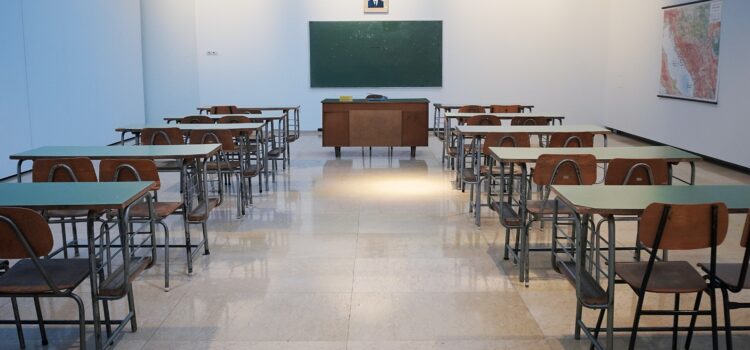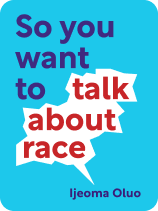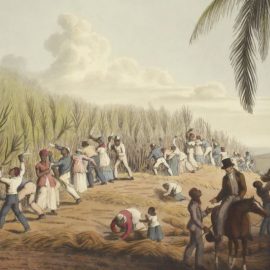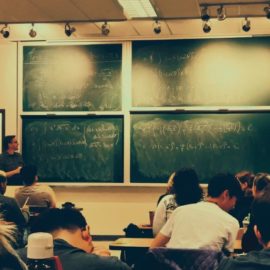

This article is an excerpt from the Shortform book guide to "So You Want to Talk About Race" by Ijeoma Oluo. Shortform has the world's best summaries and analyses of books you should be reading.
Like this article? Sign up for a free trial here .
How does systemic racism manifest in the education system? And what can we do to fight it?
Systemic racism in the education system is pervasive. It manifests at every level from preschool through primary to secondary school and beyond. To end this cycle for the next generation of children of color, we have to encourage schools to address the opportunity gap between white students and students of color.
This article looks at how systemic racism manifests in the education system and how it affects students’ performance and learning experiences in preschool, elementary, and secondary school.
How Does Systemic Racism Manifest in the Education System?
Systemic racism is deeply embedded into the current education system. The opportunity gap between white students and students of color begins to open up even before they start school. On average, children of color are born into households with fewer resources (for food, internet, and books). They’re also born into areas with underfunded schools.
There’s an intergenerational effect of incarceration: Boys whose fathers have been in jail are less likely to be judged emotionally ready to start school. And teachers may have lower expectations for children of color.
Preschool
Preschool teachers are more likely to perceive the play of children of color as aggressive and threatening and to look for challenging behaviors in black children (Shortform note: This study tracked the eye gazes of teachers told to look for problem behaviors in a video clip of a mixed-race, mixed-gender playgroup. The teachers gazed longer at black boys. In reality, there were no problem behaviors in the video clip).
They’ve also been shown to lack empathy for children of different races to their own. (This is significant because most preschool teachers are white women.) These perceptions of aggression and relative lack of empathy lead to more suspensions and expulsions of black children, even at the preschool level.
Elementary School
Asian American children are the minority kids held up as an example by the White Supremacist mainstream. But Asian American students can be disadvantaged when teachers believe that they don’t need as many academic resources as other kids to be successful. This belief is common among teachers, despite the fact that one third of Asian American kids are behind their counterparts in reading, writing, and speaking. This delay occurs commonly in kids that grow up in non-English-speaking households.
Black students are perceived as more threatening than white students. For example, at one Seattle school, a black five-year-old (the only black boy in his class) pretended to shoot classmates with a finger gun and then hit two teachers when they tried to discipline him. The school sent a letter to all parents informing them that Sagan had “assaulted” two teachers and “threatened” other students in the class. The letter said that he would be suspended, and a member of the school board argued that the school should formally press charges against him.
Hitting teachers is not acceptable, and there should be consequences. But a five-year-old hitting a teacher is not assault. The punishment should be a timeout and a stern conversation, not a denial of education and the disruption of a whole educational career at age five. This is what happens when the education system looks at children of color and sees violent, dangerous, unstable future criminals and not normal children learning to regulate their emotions.
From early on, parents of color have to prohibit their children from playing with toy guns in the street. Parents of white children don’t have to do this.
Another instance of systemic racism in the education system is the disproportionate pathologizing of children of color compared to white children. Children of color are more likely to be placed in special education programs, even though they have the same rates of learning disabilities as white children. In fact, children of color who are difficult to discipline are often diagnosed with learning disabilities and put in special education programs. This can lead to higher suspension rates. For example, one-quarter of black, Native American, Pacific Islander, and mixed-race boys diagnosed with a developmental disability were suspended in the 2011-2012 school year.
Secondary School
These problems are compounded in the higher grades. In secondary school, teachers are more likely to communicate with the parents of children of color about problem behaviors and with the parents of white children about achievements.
Sixteen percent of the school population is black, but 31 percent of suspended students and 40 percent of expelled students are black. Black students are suspended at more than three times the rate of white students, and 70% of the students arrested in school and referred to law enforcement are black. Furthermore, black children tend to be suspended for subjective offenses (for example “disrespect” to a teacher), while white children tend to be suspended for objectively provable reasons (for example drugs or violence).
Punishing children of color by denying them education has long-lasting effects. Students who are suspended often have to repeat the school year. Many of them decide to drop out of school completely instead.
What Is the “School-to-Prison Pipeline”?
The phrase “school-to-prison pipeline” describes the continuity between the overdiscipline of children of color at school and the overpolicing of adults of color.
Here’s how it works. Children of color spend most of their waking lives in an education system that constantly punishes them, criminalizes them, and searches for ways to remove them. Children’s trust in their teachers and schools is damaged from early on by this unfair and overly severe discipline.
Zero-tolerance policies increase the harshness of the penalties. The Gun-Free Schools Act (1994), for example, introduced mandatory year-long suspensions for children who were caught with weapons at school. Many schools broadened the definition of “weapons” to include not only knives and guns but camping forks and “finger guns.” Coupled with the propensity of teachers to see children of color as inherently more dangerous than white children, these rules affected children of color disproportionately.
Police officers began to be placed in schools. These School Resource Officers (SROs) now handle disciplinary matters that would previously have been handled internally. In schools with SROs, the arrest rates of students are almost five times those of schools without SROs. These officers are extremely active: In the 2011-2012 school year, for example, law enforcement officers in schools arrested 92,000 students. And students who get arrested at school are more likely to be arrested again as adults.
For some kids, getting expelled isn’t even the worst consequence of being criminalized on the basis of your skin color. On November 22, 2014, Cleveland police shot 12-year-old Tamir Rice for holding a toy gun. When his 14-year-old sister ran over to help him, police tackled her and put her in handcuffs. Steve Loomis, President of the Cleveland Police Union, said later that the boy was oversized and “menacing.” This is what happens when people of color are criminalized on sight, when the concept of “children” to be nurtured and protected has crystallized around an image of whiteness, and when black and brown children aren’t allowed to be children.
How Do We Fight Systemic Racism in Education?
To end this cycle for the next generation of children of color, we can showcase their achievements instead of lamenting disciplinary difficulties. We can discourage racially charged language (“thugs” and “hoodlums”), increase the visibility of black and brown kids when we talk about childhood in general, and encourage schools to address the opportunity gap.
Many children of color miss out on having a carefree childhood because if they make any mistakes, if they’re rebellious or mischievous in front of the wrong person, they’ll end up in jail and suffer long-term life consequences.
We can’t give them back their childhoods. We have to act now to fight systemic racism in the education system for the next generations of children to come.
Today’s Young Activists
Our kids are already activists. They’ve solved the “black lives matter” vs “all lives matter” debate and moved on and are looking at us like we’re crazy for still being stuck there.
Our job isn’t to tell them what to think. It’s to do the job of the adult generation in a society: to build the next generation a platform that they can use for as long as they need to and then tear down to build a better one.
If we have the conversations and do the work now, we can trust our kids. They’ll do the rest.

———End of Preview———
Like what you just read? Read the rest of the world's best book summary and analysis of Ijeoma Oluo's "So You Want to Talk About Race" at Shortform .
Here's what you'll find in our full So You Want to Talk About Race summary :
- How to have an intelligent, empathetic conversation about race
- Why people are afraid to talk about race
- Where racism came from and what fuels it






